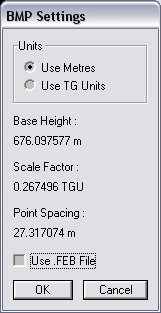
To fix the issue, you will need to add some Layer Info to your Landscape Actor. This will turn your whole landscape black. Once the Material is complete, apply it to the Landscape Actor. TextureSample: T_Rock_Slate_D (Found in StarterContent/Textures) TextureSample: T_Ground_Gravel_D (Found in StarterContent/Textures) TextureSample: T_Ground_Grass_D (Found in StarterContent/Textures) The Setup for your Material should look something like this. For this example, we will be making a very basic Material that could be easily be expanded upon if needed. If you have questions regarding the Landscape creation process, check out Landscape Creation. Importing Layers that were made in an external application provides you with the flexibility to use your preferred terrain workflow, but you first need to make sure that a few things are set up in order to get everything to work smoothly.įirst, make sure that you have created a Landscape to work with. If you are creating layers in Photoshop, use the following settings when creating a new document: Images for the built-in formats are still required to be grayscale, 8 bits per pixel, single channel files in either. The editor's existing support for image-based importing has been converted to use this interface and is fully supported. Landscape layers can be imported from external programs via implementation of the ILandscapeHeightmapFileFormat and ILandscapeWeightmapFileFormat interfaces. Which can be used customize the look and feel of your Landscape. Landscape layers are special textures that can contain both heightmaps and color data. When exporting heightmaps from external programs, only the following formats are usable inside UE4.If this is your first time using the Landscape tools, you might want to check out the Landscape Overviewfirst. Which can then be imported, cleaned up, or modified using the editing tools inside Unreal Editor, making it a better fit with the world and desired game play. Programs such as World Machine and Terragen can quickly create the base heightmap for your Landscape. Using external tools to create a base heightmap to use inside UE4 can be a excellent way of speeding up the Landscape creation process.
#Terragen export heightmap software#
To fix this issue, return to your image editing software and resize your file to match the correct Landscape extent as displayed by the warning message. If your layers are not output at the correct size, you will see the following warning: Your custom layer file should be the same resolution as your Landscape Actor's Overall Resolution that was set when you created it (the default is 505 x 505). RAW file that contains your custom layer data. To do this, right-click on the chosen Target Layer and select the Import from file option from the pop up menu. Now it is time to import our custom layer. When completed, your Target Layers section of your Landscape panel should look something like this. To read more about Layer Info objects, refer to the Layer Info Objects page. For this example, create one Layer Info object for each of our three layers.



If this is your first time using the Landscape tools, you might want to check out the Landscape Overviewfirst.


 0 kommentar(er)
0 kommentar(er)
